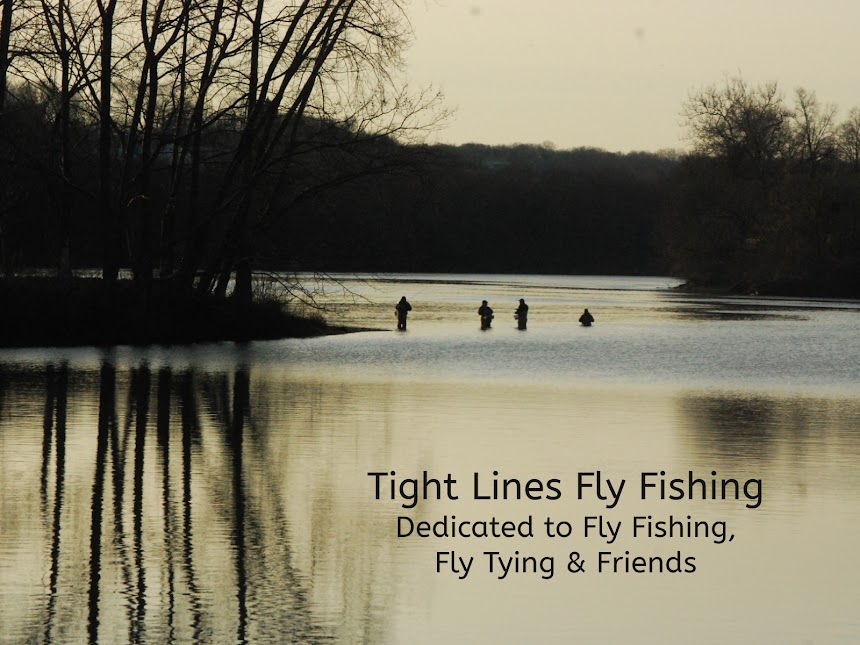Baker's Hole Bugger
Hook: Size #6 to #12 steamer hook.
Tying thread: Brown, 6/0.
Bead: Optional, color of choice.
Weight: Lead or lead free wire.
Tail: Brown marabou on the bottom; then gold Krystal flash; topped byYellow marabou.
Rib: Gold Wire.
Hackle: Grizzly saddle hackle.
Body: Yellow/brown variegated chenille sized to match hook size.
This is a very tried and true wooly bugger pattern. It was originally developed for ‘Baker’s Hole’ on the Madison River, but like most wooly bugger patterns, it works everywhere.
Begin by placing your bead on the hook if you want to provide some additional weight. Another option to weight your fly is to make 6-8 wraps of lead or lead free wire at the midpoint of the hook shank. If you do so, cover those wraps with your thread. Next, take a clump of Brown Marabou and tie it in at the hook bend for your tail. I don’t like to make the tails of my woolly bugger too long. It should be a hook shank length or less. When tying in the marabou, I trim it to length so that it rests along the entire hook shank. This lets me give the bugger a nice even body profile. (This is a little more difficult to do if you use some lead wraps. It’s why I prefer to use a bead to add additional weight to my buggers.) On top of the Brown Marabou tie in six strands of Gold Krystal flash. Next, tie in a clump of Yellow Marabou with the same technique you used for the Brown Marabou. Now, tie in your Gold Wire rib. The rib is going to make your bugger much more durable. Next, tie in your Grizzly Saddle Hackle. Now tie in your Variegated Chenille. Palmer the Chenille forward and tie & trim it off behind the eye or bead. Now, palmer your hackle forward creating even wraps along the hook shank. At the eye or behind the bead, give it an extra wrap or two. Next counter wrap your Rib/wire along the hook shank. Try not to bind down the hackle fibers. Tie and trim that off behind the eye (or bead if you used one). Apply some head cement for durability.
How to fish this fly – You can swing it like a wet fly. Also retrieve and strip it at various speeds. If the water is high, I like to use a sink tip line.
If you have any questions about this fly or would like to submit a Fly of the Month I can be reached at 203 305-3850 or at pdinice@frontier.com .
Tying thread: Brown, 6/0.
Bead: Optional, color of choice.
Weight: Lead or lead free wire.
Tail: Brown marabou on the bottom; then gold Krystal flash; topped byYellow marabou.
Rib: Gold Wire.
Hackle: Grizzly saddle hackle.
Body: Yellow/brown variegated chenille sized to match hook size.
This is a very tried and true wooly bugger pattern. It was originally developed for ‘Baker’s Hole’ on the Madison River, but like most wooly bugger patterns, it works everywhere.
Begin by placing your bead on the hook if you want to provide some additional weight. Another option to weight your fly is to make 6-8 wraps of lead or lead free wire at the midpoint of the hook shank. If you do so, cover those wraps with your thread. Next, take a clump of Brown Marabou and tie it in at the hook bend for your tail. I don’t like to make the tails of my woolly bugger too long. It should be a hook shank length or less. When tying in the marabou, I trim it to length so that it rests along the entire hook shank. This lets me give the bugger a nice even body profile. (This is a little more difficult to do if you use some lead wraps. It’s why I prefer to use a bead to add additional weight to my buggers.) On top of the Brown Marabou tie in six strands of Gold Krystal flash. Next, tie in a clump of Yellow Marabou with the same technique you used for the Brown Marabou. Now, tie in your Gold Wire rib. The rib is going to make your bugger much more durable. Next, tie in your Grizzly Saddle Hackle. Now tie in your Variegated Chenille. Palmer the Chenille forward and tie & trim it off behind the eye or bead. Now, palmer your hackle forward creating even wraps along the hook shank. At the eye or behind the bead, give it an extra wrap or two. Next counter wrap your Rib/wire along the hook shank. Try not to bind down the hackle fibers. Tie and trim that off behind the eye (or bead if you used one). Apply some head cement for durability.
How to fish this fly – You can swing it like a wet fly. Also retrieve and strip it at various speeds. If the water is high, I like to use a sink tip line.
If you have any questions about this fly or would like to submit a Fly of the Month I can be reached at 203 305-3850 or at pdinice@frontier.com .

